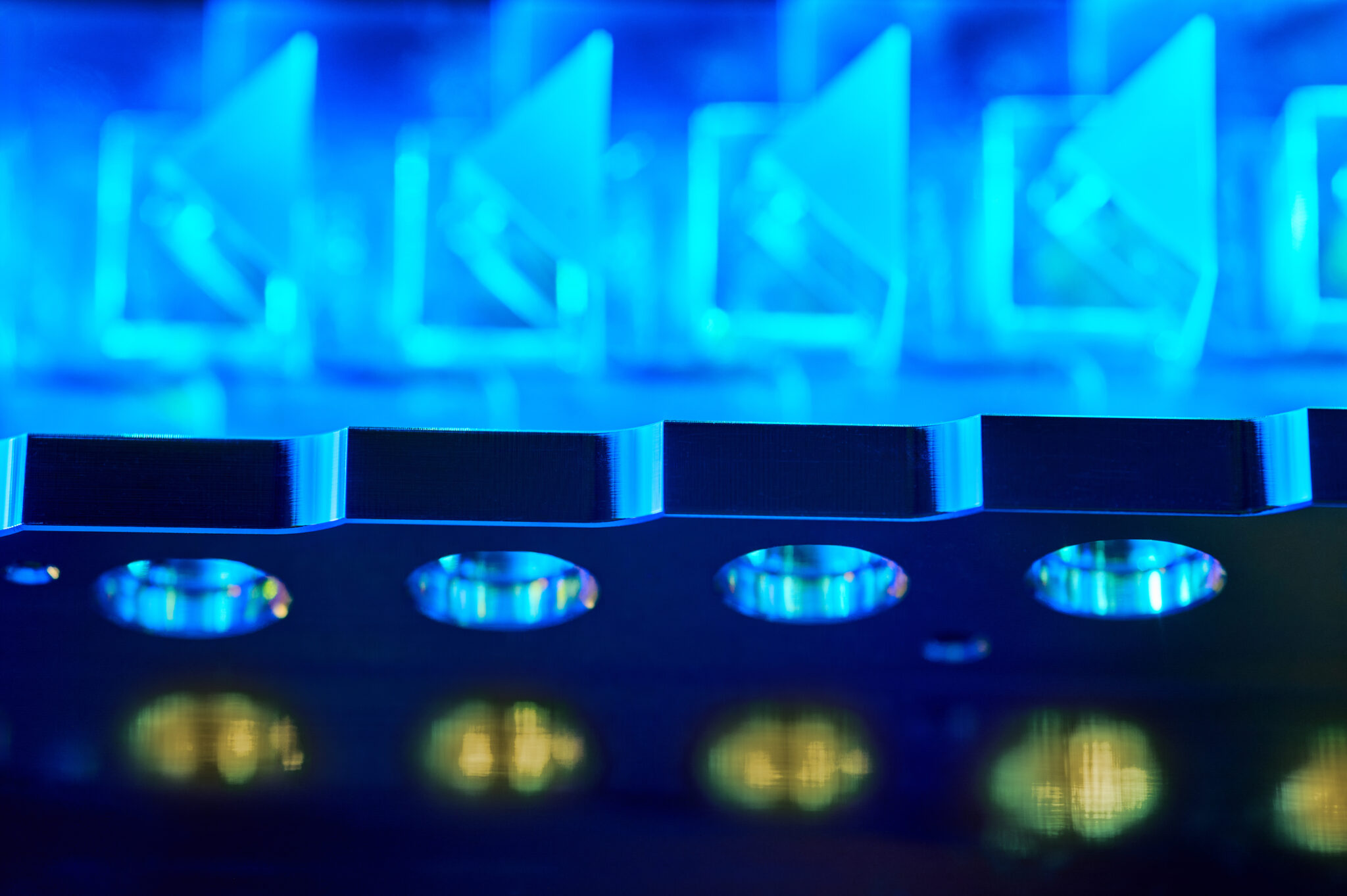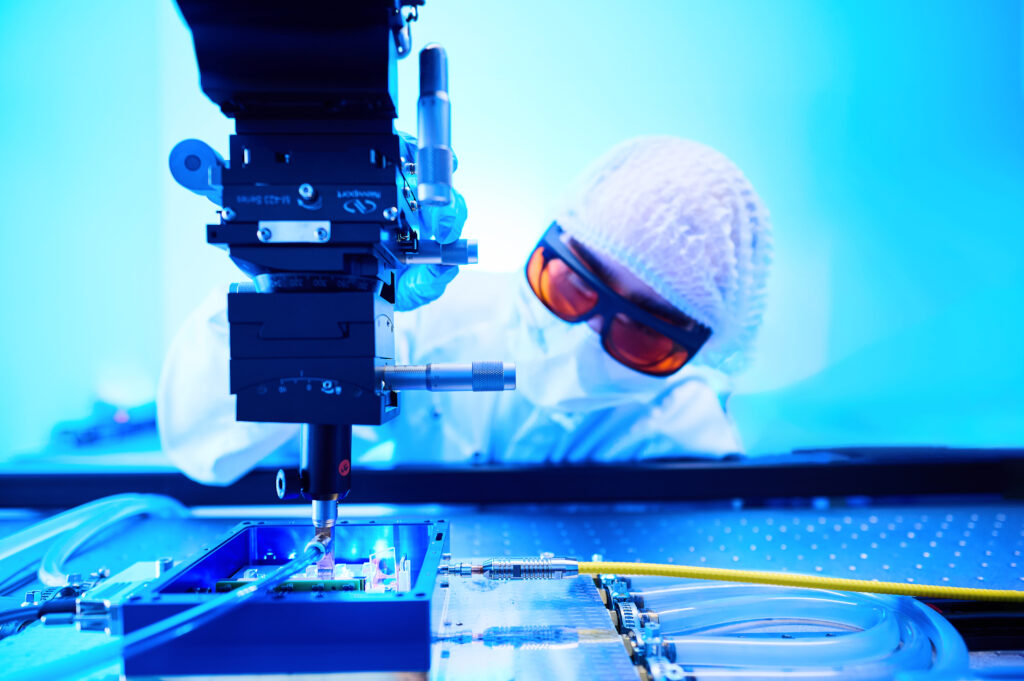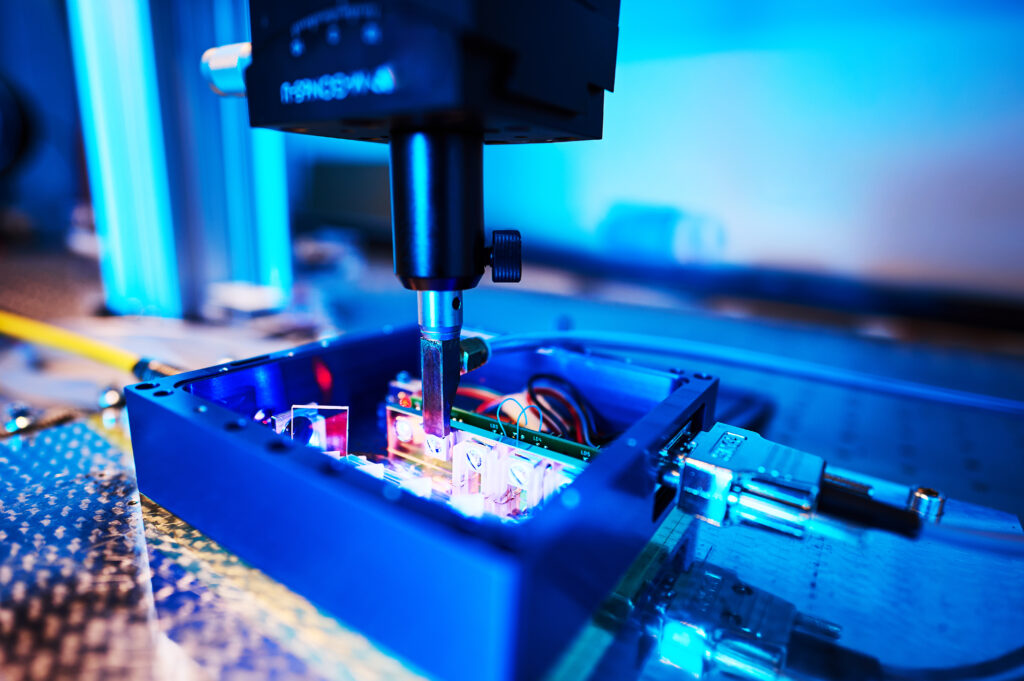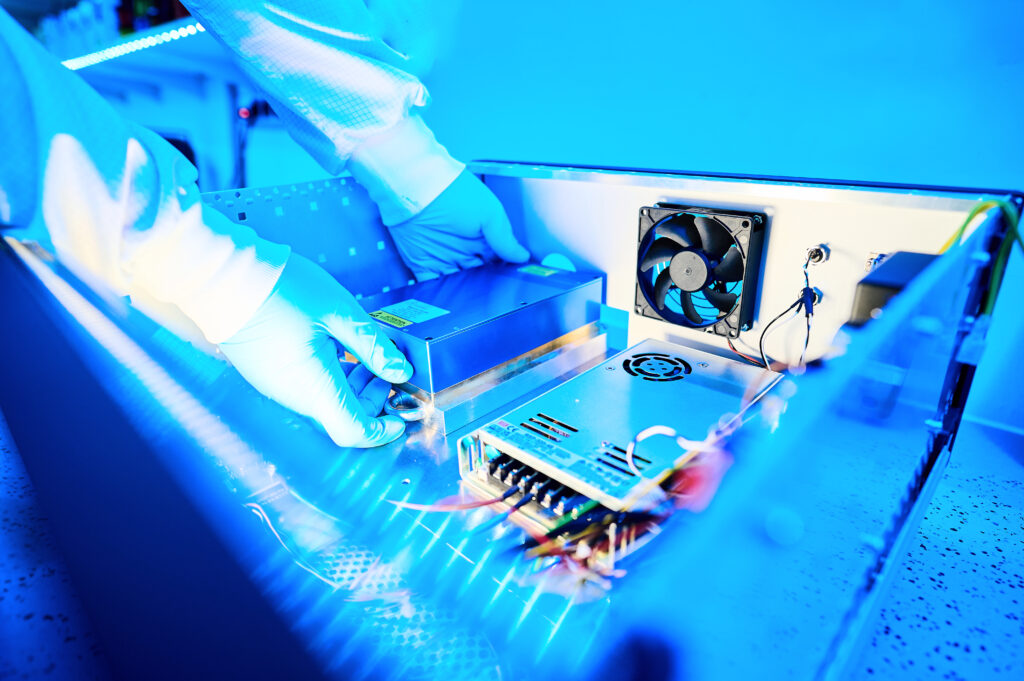Diode Laser Technology
Introduction
In recent decades, diode laser technology has become an essential component of modern laser applications in science, industry and medicine. Diode lasers, also known as semiconductor lasers, are based on the use of semiconductor materials to generate coherent light, which distinguishes them from other types of lasers such as gas lasers or solid-state lasers.
Functional principle of diode lasers
Diode lasers consist of a p-n junction layer, which is created by doping various semiconductor materials. By applying a voltage across this layer, electrons and holes are injected into the active area, where they recombine. During this recombination process, photons or light particles are released. These emitted photons are amplified by optical resonators, resulting in laser radiation. The special thing about diode lasers is that they are directly electrically pumped, which makes them compact, efficient and versatile.
Properties and advantages of diode lasers
High efficiency: Diode lasers have a high electrical efficiency, often over 50 %, which makes them the most energy-efficient laser types. This means that they require less energy to achieve the same optical power compared to other laser sources.
Compact design: Due to their simple structure, diode lasers are usually extremely compact and lightweight, making them ideal for portable devices and applications where space and weight are important.
Wide range of applications: Diode lasers can emit light in a wide range of wavelengths, from the near UV to the far infrared. This enables adaptation to specific applications, whether in medical technology, industrial production or telecommunications.
Robustness and durability: Diode lasers are robust and have a long service life, which makes them particularly attractive for industrial applications where reliability is crucial.
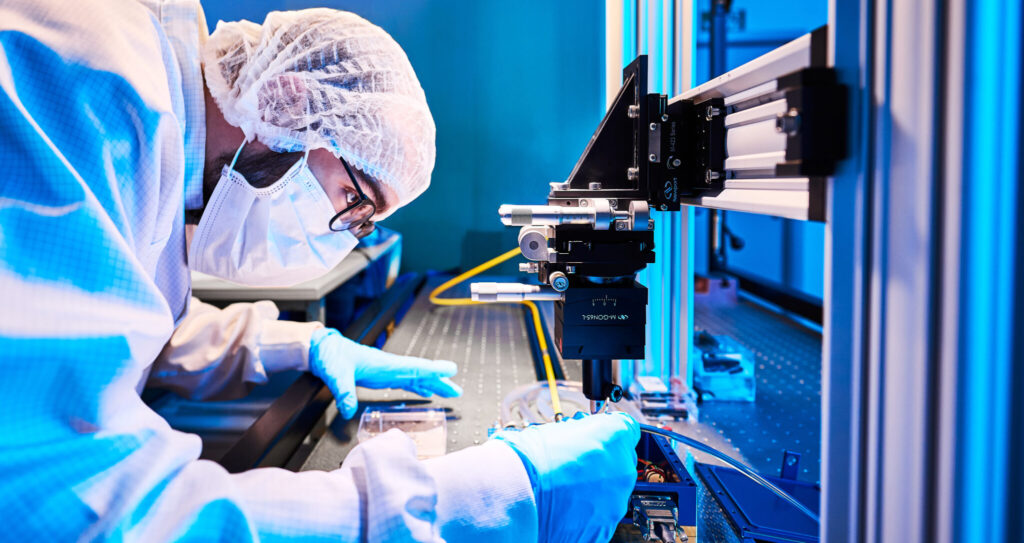
Fields of application for diode lasers
Telecommunications: Diode lasers are the driving force behind fiber optic technology. They are used to transmit light signals over long distances with minimal loss, which forms the basis of the modern internet. With the ability to transmit data at extremely high speeds, they enable communication over long distances.
Medical applications: In medicine, diode lasers are used for a variety of therapies, including surgical procedures, treatment of skin conditions and eye surgery (e.g. LASIK). They provide precise incisions with minimal tissue damage and reduced healing time.
Material processing: Diode lasers are widely used in industrial production, e.g. for welding, cutting and engraving metals or other materials. In addition to classic processes, diode lasers are also ideal for micro material processing, such as stripping fine wires or making electrical connections by soldering or welding. They offer high precision and are ideal for applications where precise control of power and focus is required.
Sensors and measurement technology: In sensor technology, diode lasers are used for high-precision measurements, e.g. in rangefinders, speed detectors or spectroscopy applications. Their ability to emit light in narrow wavelength ranges enables the precise analysis of materials and environments.
Future developments and potential
The development of diode laser technology is progressing continuously. Current areas of research are focusing on optimizing beam quality, increasing output power and improving service life. Another important topic is miniaturization, as more and more applications could benefit from smaller, more efficient and more powerful lasers.
Conclusion
Diode lasers have shaped and revolutionized modern technology in many areas. Their efficiency, compactness and versatility make them an indispensable technology in numerous industries. With continued research and development, future generations of diode lasers could become even more powerful and cost-efficient, enabling new applications and innovations in a variety of fields.
